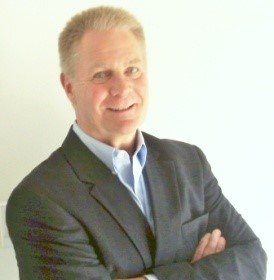Dwayne Wimmer: I think it comes down to the fact that they have no idea what it takes. They might think that if they just move some stuff around, they’re going to get stronger, but honestly, it’s got to be an overload. Their body must have a reason to adapt. We customize the intensity to everybody who comes in here; some people can push themselves physically harder than others. Most of the time the biggest hurdle is the person’s mind, and what does it take to create that stimulus? We slowly work people into creating an overload that will stimulate the body to adapt, and I think unfortunately in our industry, a lot of people don’t take the time or don’t have the patience to work with people, especially seniors, who might never have done anything like this before.
You should ease them into it because it’s an unknown, it’s uncharted waters for most people. Even younger people, but especially people 50 or over, they’ve never done anything like this before. We must guide them and make sure they understand what we’re doing every step of the way, and that they understand that it needs to be a little challenging. If it’s not challenging, their body has no reason to change, and that’s why they’re here in the first place.
Phil Faris: Can you explain what you mean by overload and adapt? Especially for people who have never done it. For example, what reaction would I get if I walked up and said, “Guess what? We’re going to go to a fitness center, and they’re going to teach us about overloading and adapting.” What does that mean regarding building muscle?
Dwayne Wimmer: The analogy I often use is, think about calluses on your hands. If you take a feather and just run it across the palm of your hand over and over and over again, your skin has no reason to get stronger, because there is no stimulus, there is no overload, there is no stress to the skin. But you take something rough like a file and slowly rub it across the palm of your hand, now your skin gets tougher, and you get calluses. So, think of your muscles in the same way. If you move them against a resistance that only meets your capabilities, your body has no reason to get stronger. But if you push your body a little bit harder, and use something a little bit outside of your ability, now your body has a reason to adapt. It will get stronger, and in doing so, you can translate that strength into everyday life. The overload comes with taking your body to a point where it’s not used to going or has never gone. It must adapt to that and get stronger.
Phil Faris: You’re a big advocate for fitness education, but there’s a lot of misinformation out there. What are some of the biggest misconceptions that your clients may have about gaining muscle and strength, and strength training?
Dwayne Wimmer: Especially for women, you’re not going to get big and bulky doing this. That’s a genetic factor that’s seldom found in most humans, so you can work as hard as you possibly can, and you’ll never, ever see yourself get as big as a bodybuilder. So that misconception is something that’s haunted our industry for decades because a lot of what we were founded in was bodybuilding, but unfortunately, most bodybuilders take performance-enhancing drugs, and they’re getting to places where the average person can’t. What we’re looking at is getting your body as strong as possible, and you’ll be functional in everyday life, and in doing so, you’re not going to get big and bulky.
Phil Faris: Are there other misconceptions that they have, besides being bulky?
Dwayne Wimmer: Losing flexibility is another big misconception. We work the full range of motion, so if you work from the beginning of the ability of the muscle to the end of the ability of the muscle, you will continue to have a functional range of motion. And in having that functional range of motion, you will continue to have the flexibility to do everyday life activities. Now, you’re not going to be able to do the splits like a ballerina or a gymnast, but that’s beyond functional flexibility. We’re looking to make sure that people stay within their functional level.
Another misconception is that they’ll get hurt. Our biggest focus is to keep people safe first, and do no harm. Just like the Hippocratic Oath that the doctors take, we’re here to help people get stronger, and if they’re getting hurt exercising, they can’t get healthier. Exercise should never hurt you.
Phil Faris: I recently read an AARP article that talked about how Baby Boomers are re-entering the fitness arena and participating in more vigorous activities. Now, they’re showing up in the doctor’s office or to see the physical therapist’s a lot more. What are some of the specific things that you do to minimize getting injured or hurt?
Dwayne Wimmer: Nothing we do should hurt them in and of itself. If they’re coming to the table with some injuries, we need to know that. So, we sit down and go over an extensive health history of each client before we even get started. We make sure that if they do have some orthopedic issues or any issues that we may need to know of beforehand, we make sure we know how to work around that, or if need be we make sure they talk with their doctor. Because we don’t want them to exacerbate a problem that they already have coming in the door. Moving forward, everything we do is under control. Every movement is slow and controlled through a full range of motion so that your forces on the body are minimized; the repetitions are minimized.

